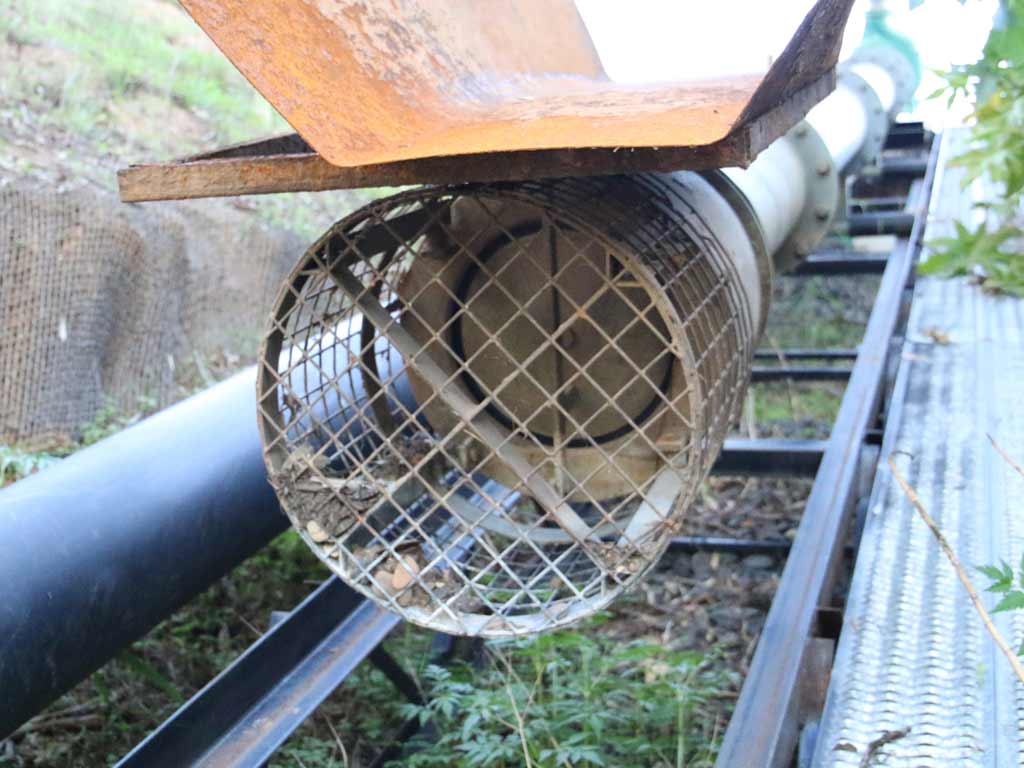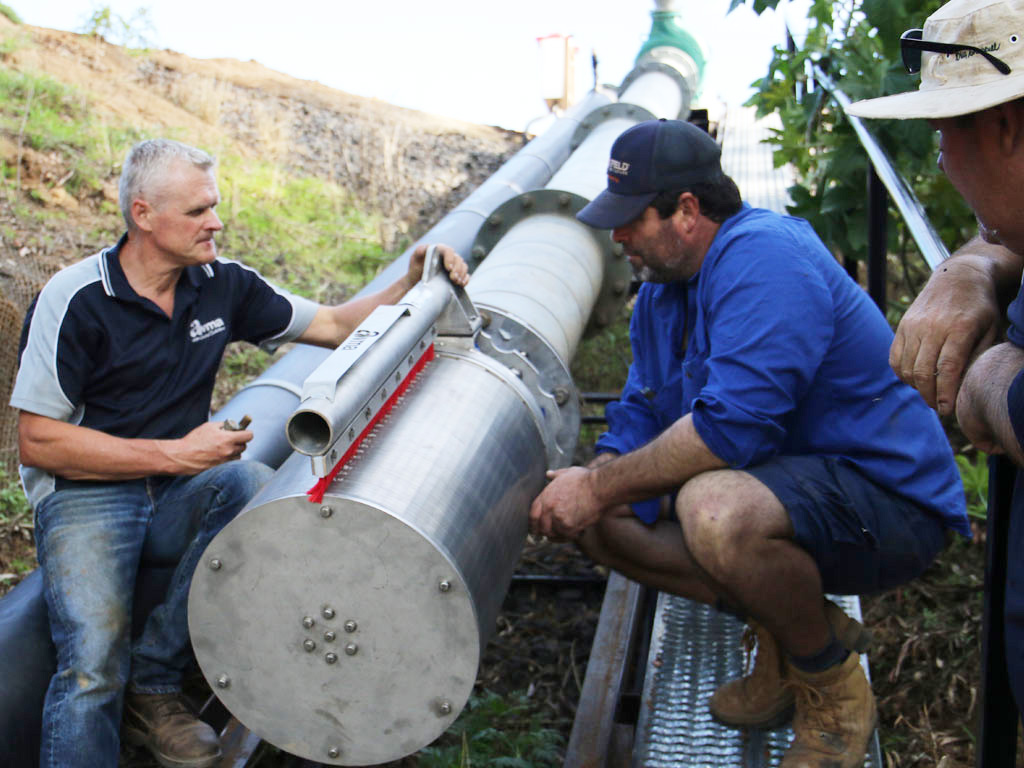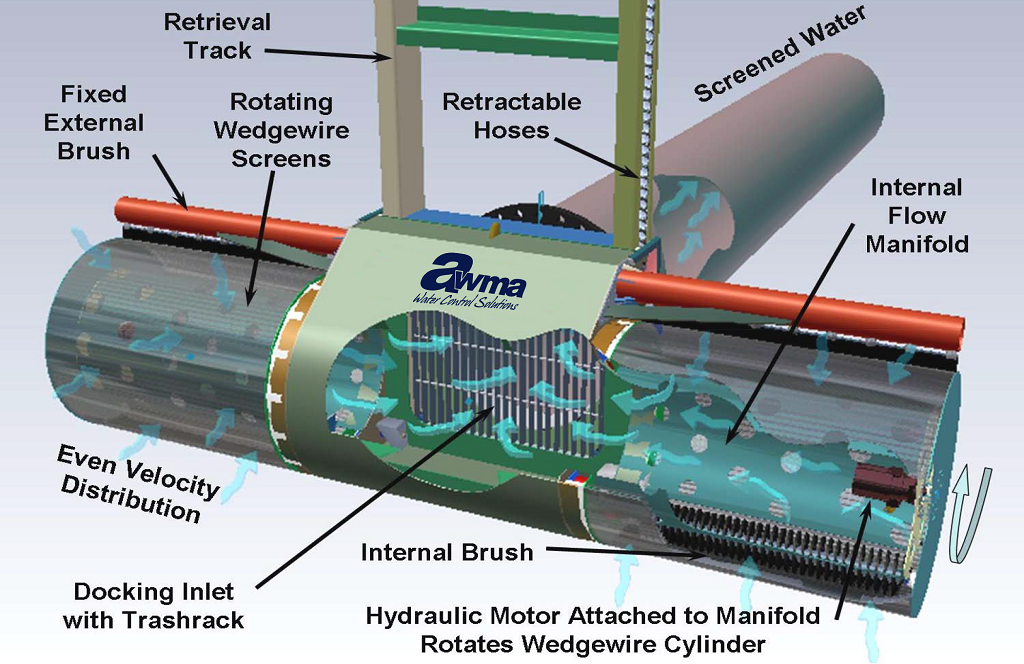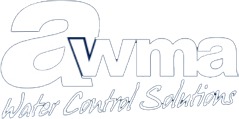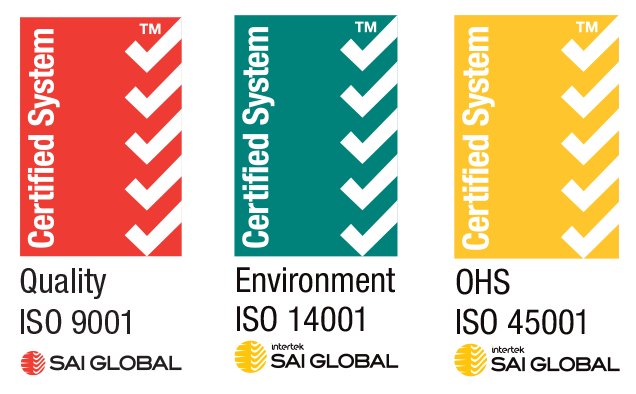Typically an existing inlet (suction) (trash) screen is designed to protect a pump against damage and blockages from larger debris in the water way such as sticks, leaves and aquatic vegetation. Most traditional screens are not self-cleaning, so are designed with large holes or slots to stop the screen from blocking up. This means that the screen often drags fish of all life stages and other aquatic animals into or onto the screen. Traditional Trash Screens are not designed to reduce approach velocities, just screen, so create 'high approach velocities', have a 'large area of influence’ and 'impinges and entrains fish' and other aquatic life, often killing them removing them from the natural waterway and future viability. Often inlet screens are so badly designed that they regularly block up and in the end are removed, offering zero protection and increasing fish mortality significantly.
The three key design criteria for sustainable fish protection on a diversion inlet are:
- Low approach velocity at the inlet: <0.12 m/s (most pumps would have between 1-3 m/s at the inlet).
- 3mm or less slots/holes in the screen
- That the screen be self-cleaning
If your existing inlet screen does not meet the above criteria, at a minimum it will be killing and removing fish at the diversion.
The other consideration for a sustainable Fish Exclusion Screen solution is quality of build and the material the screen is made from. The screen will spend 100% of its operational life under water where it is difficult to inspect and maintain. For a Fish Exclusion Screen to effectively protect fish and other aquatic life it must be operating at 100% efficiency. A screen that requires regular maintenance or fails due to corrosion will be expensive to operate and will not sustainably protect fish.
Most trash screens fitted to diversion inlets are manufactured from ferrous materials and will corrode and fail over time.

